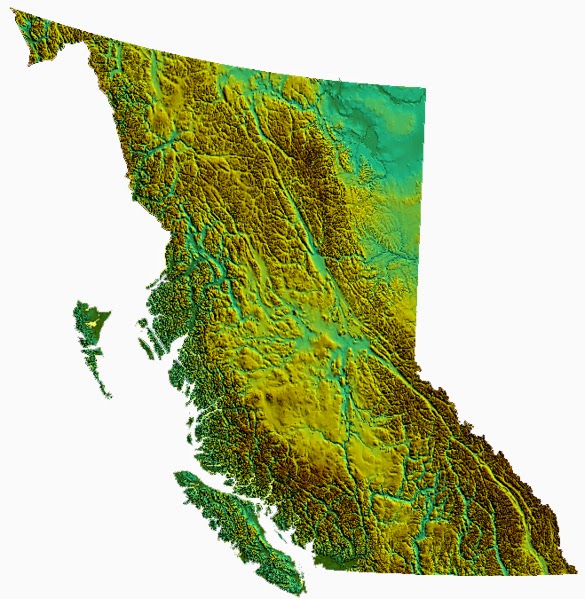
The Pacific and North America plate boundary off the coast of British Columbia and southeastern Alaska is a complex system of faults capable of producing very large earthquakes. The recent 2012 Mw 7.8 Haida Gwaii and 2013 Mw 7.5 Craig earthquakes released strain built up over years, but did not release strain along the Queen Charlotte Fault, which remains the likely source of a future large earthquake, according to reports published in a special issue of the Bulletin of the Seismological Society of America (BSSA).
“The study of these two quakes revealed rich details about the interaction between the Pacific and North America Plates, advancing our understanding of the seismic hazard for the region,” said Thomas James, research scientist at Geological Survey of Canada and one of the guest editors of the special issue, which includes 19 technical articles on both the Haida Gwaii and Craig events.
The Haida Gwaii and Craig earthquakes offered new information about the tectonic complexity of the region. Prior to the 2012 earthquake, the Queen Charlotte Fault, a strike-slip fault similar to the San Andreas Fault in California, was the dominating tectonic structure in the area.
Nykolaishen et al. used GPS observations of crustal motion to locate the earthquake’s rupture offshore to the west of Haida Gwaii, rather than beneath the islands. A close study of the Haida Gwaii mainshock by Kao et al. revealed the Pacific plate slid at a low angle below the North American plate on a previously suspected thrust fault, confirming the presence of subduction activity in the area.
“This was an event the thrust interface of the plate boundary system, confirming that there is a subduction system in the Haida Gwaii area,” said Honn Kao, seismologist with the Geological Survey of Canada, who, along with his colleagues, examined the source parameters–causative faults, rupture processes and depths–of the mainshock and sequence of strong aftershocks.
“The implication of a confirmed subduction zone is that in addition to the Queen Charlotte Fault, we now have another source which can produce devastating megathrust earthquakes in the area,” said Kao.
The aftershocks clustered around the periphery of the rupture zone, both on the seaward and landward side of the plate boundary and reflected normal faulting behavior–caused by the bending, extending or stretching of rock– rather than the thrust faulting of the mainshock.
“Our observations of normal faulting imply that the mainshock of the Haida Gwaii earthquake dramatically altered the stress field in the rupture zone, especially in a neighboring region,” said Kao.
The distribution of aftershocks occurred to the north of a previously identified seismic gap where large earthquakes have not occurred in historic times. The gap is located to the south of the where 1949 M8.1 Queen Charlotte earthquake ruptured. Though the Haida Gwaii earthquake may have activated some part of the Queen Charlotte Fault, said Kao, it was limited and did not relieve stress along the seismic gap.
The Haida Gwaii rupture shook southeastern Alaska, and the northwest directivity of ground motion may have influenced the timing of the January 2013 Craig earthquake, suggests James et al. in the introduction to the overall special issue.
A report by Stephen Holtkamp and Natalia Ruppert at the University of Alaska Fairbanks examines 1785 aftershocks in the Craig earthquake sequence, identifying a mix of faulting behavior that suggests the region is still in a state of transpression–the plates are both sliding past each other and colliding at an angle.
The articles in this special issue will appear in print in early May and online in April. The special issue features three main themes. The regional tectonic framework and the nature of the interaction between the Pacific and North America plates at the Queen Charlotte Fault zone are presented in five papers. Three papers focus on the Craig earthquake and examine the main shock, aftershocks and crustal motions. Ten papers discuss the Haida Gwaii event.
Note : The above story is based on materials provided by Seismological Society of America.










